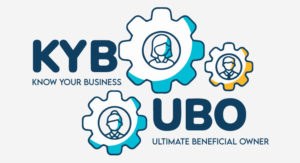Best Ways to Reduce Friction During Customer Verification Process

Businesses have to verify hundreds or even thousands of customer identities every single day for several reasons. To reduce fraud of all kinds, e-commerce organizations, banks, hospitals, and other financial institutions have to verify customer identities.
The most obvious reason for doing customer identity verification is identity fraud. Although a strict customer identity verification process leads to increased friction for the customers.
Poor user experience and tough onboarding can annoy customers into leaving the onboarding process. As more and more customers and businesses offer online transactions, verifying customer identity becomes more prevalent. To keep up with the growing customer demands and legal obligations, businesses have to apply a series of customer verification processes.
There are some methods organizations all over the world can follow to reduce friction during the customer verification and onboarding process.
How to Reduce Friction During Customer Verification?
1. Eliminate the Tediousness
Verification of customer identity is crucial when money or sensitive information is involved. Businesses build their reputation around good customer experience. It’s reasonable that most businesses would want their customer verification process to be as accurate and as effective as possible.
Most organizations fail to understand the difference between an efficient and a smooth process. A perfect customer verification process can also be uncomfortable and monotonous for users. In this digitally driven world, poor customer experience is the stepping stone for driving users away.
The key is to find ideal authentication and verification methods that don’t make the onboarding process tough. It is not a good business strategy to provide customers with a poor customer experience. One example of smooth and efficient verification is Two-Factor or Multi-Factor Authentication. This verification process requires your customers to enter their username-password and then enter a code that’s sent to their email or mobile phone.
As multi-factor authentication is really common worldwide, the process is easy to recognize and provides an incredible user experience for the customers.
2. Make The Process Faster
The world has gone digital, customers don’t want to wait for hours for a simple onboarding process. One of the fastest methods of authentication is by allowing your customers to log in by using their accounts like Microsoft accounts, Google accounts, and Facebook. Although you’ll have to make your customers trust in the process and that the username and password are not shared by anyone.
This method of customer verification is very common as almost all people use Facebook, Twitter, Google, and Microsoft. This process is sure to reduce friction as most users are aware of this type of customer verification process. To make things better, it is fast, secure, and seamless.
3. Don’t Over-Rely on Humans
If the customer verification process isn’t automated, then it automatically leads to additional friction and poor customer experience. The manual verification process can become overwhelming if there’s an influx of customers waiting for verification.
As the business grows, so does the number of customers. With a manual verification process, it can become tough to keep up with the customer demands. Increased customer demand can create a bottleneck that slows the process down immensely. It’s a problem that can become too tough to handle.
Well, you can always hire extra employees to keep up with the growing demand. However, having an automated customer verification process can be a far more viable solution as opposed to hiring a new team.
Manual processing of customer verification usually relies on cumbersome methods of getting ID information. Manually authenticating all the information can take too much time, also the manual verification process can be riddled with errors. Human error is a part of life and manually verifying customer information can be full of errors. Human errors are exactly the weak points fraudsters look into in a verification process. To avert this disaster, an automated verification process is suggested. As a business, you should consider checking your customer’s information automatically using “Knowledge-Based Authentication”.
4. Choose a Flexible Customer Verification Process
A simple rule of thumb is that you build a strong process of verification for verifying customer data. Fraudsters will always try to get through a business’s systems for completing fraud of any kind. As a business, it is imperative that you keep building stronger solutions. As verification features get stronger, fraudsters keep deriving new methods of getting around the verification process.
Customer verification systems are under a constant threat of attack from fraudsters. The best systems offer different methods of customer verification, enhancing speed and customer experience which can’t be done using a manual method of verification.
You should make sure not to rely on just one verification method that can be easily broken down. The method of verification you chose should be able to offer verification from different providers or different ways of verification.
5. Verification Methods Should Not Violate any Laws
Businesses aren’t aware that some automated ID checking processes can violate privacy and other laws. If your business is associated with a service provider that doesn’t follow rules and regulations, your business can be open to huge fines.
A lot of jurisdictions require advance notification and consent to process a person’s ID information. In some unique cases, you may even require written consent from the customers. Some online businesses have no choice but to use manual customer verification due to certain restrictions.
Businesses need ID verification solutions because some products and services are age-restricted. Not following this particular rule can lead to a huge lawsuit. Before choosing a customer verification solution, a business needs to make sure that it follows all the legal requirements for its customer base.
Conclusion
Your end goal should be to provide your customers with a smooth user experience, while still accurately verifying the ID of your customers and complying with legal obligations. Fortunately, solutions like DIRO’s online document verification can offer you instant customer document verification. Instant document verification means instant customer ID verification which reduces friction immensely eliminates human error and detects and mitigates fraud. DIRO provides 100% proof of authentication backed by forensic data.













